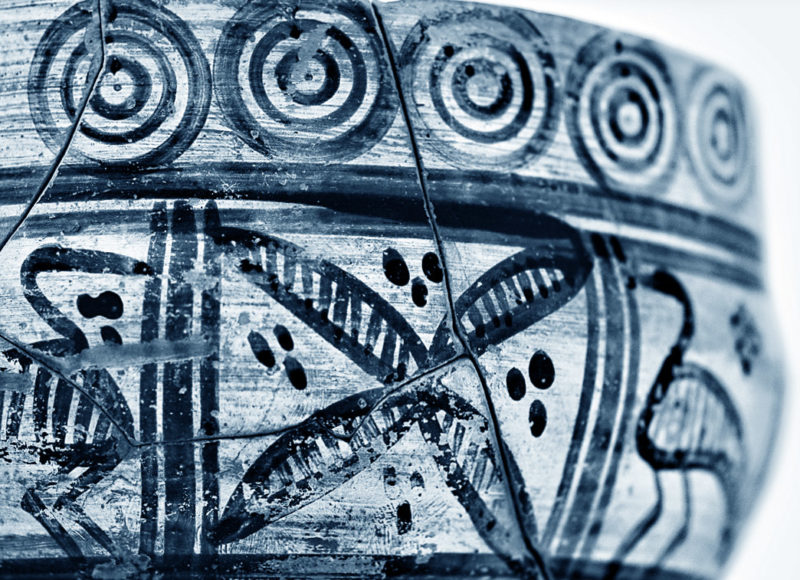Pottery studies
Eretria was almost continuously occupied from the 3rd millennium BC to the Roman period. The manufacture of ceramics on site is attested by kilns of potters at various times but also by stylistically characteristic pottery productions, which can reasonably be considered as local because of their singularity and their abundance in and around Eretria itself. Some types of vases are representative of the central Euboea more widely. This region took an active part in Greek colonization in the 8th century BC and its productions can therefore be found as far as the Greek colonies of southern Italy and the Levant, such as the famous pendent semi-circle skyphoi.
The pottery of Eretria has been subject to several studies and publications, focusing on distinct periods or shapes. Recent researches aim at approaching this material from a global perspective, thanks to an ongoing project of scientific analyses and to several doctoral thesis.
The Ceramic Industry of Eretria
An interdisciplinary program started in 2012 closely associates the Swiss School of Archaeology in Greece, The Fitch laboratory of the British School at Athens and the CNRS. The ongoing project combines macroscopic, petrographic and chemical analyses towards a diachronic investigation of pottery production and supply on the site from the Early Bronze Age to the Roman period. 425 pottery samples carefully selected from stratified deposits have been examined through petrographic and chemical (WD-XRF) analyses and compared to geological materials and experimental ceramic briquettes. The main objective is to characterise, both compositionally and technologically, local Eretrian production tracing variations and changes in local craftsmanship over time, but also imported vessels investigating the site’s changing role in regional and interregional networks.
In collaboration with:
Further reading:
Typology and chronology
Ongoing research activities focus on the ceramic assemblages at different period of times with emphasis on typology and chronology:
Bronze Age
- Sylvie Müller Celka, prehistoric pottery from Bouratza plot in Eretria
- Tobias Krapf, prehistoric pottery from Amarynthos, MH to LH pottery from the acropolis of Eretria
Early Iron Age
- Samuel Verdan and Daniela Greger, Geometric and Early Archaic pottery from Amarynthos
- Samuel Verdan, Pascal Simon and Xenia Charalambidou, Early Archaic pottery from the Heroon
Archaic
- Tamara Saggini, Late Archaic pottery from Eretria (PhD thesis)
Classical
- Claudia Gamma, Classical pottery from Eretria and Amarynthos (PhD thesis)
- Kristine Gex, Classical pottery from Bouratza plot in Eretria
Hellenistic
- Guy Ackermann, Hellenistic pottery from Eretria (PhD thesis)
Roman
- Simone Zurbriggen, Roman pottery from Eretria (PhD thesis)

